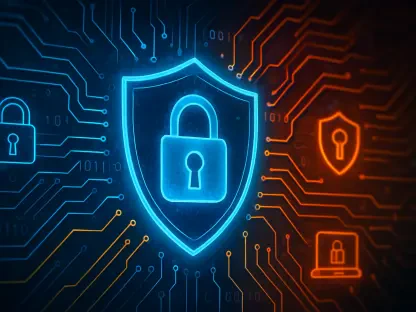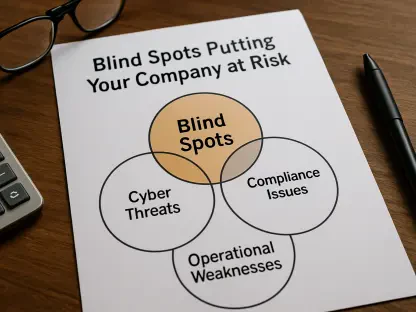In an era where cyber threats evolve at an unprecedented pace, organizations are under immense pressure to safeguard their digital environments while ensuring that every investment yields tangible value, especially as budgets are often stretched thin and the complexity of attacks continues to increase. Security teams and executives face a pivotal challenge: how to demonstrate that cybersecurity spending translates into real, measurable benefits. This pressing concern has pushed many to reevaluate their strategies, seeking solutions that not only fortify defenses but also provide clear financial justification. One such approach gaining traction is Security Service Edge (SSE), a cloud-native framework designed to address modern security needs. Drawing on insights from a Broadcom-commissioned study by Forrester Consulting focusing on Symantec SSE, this exploration aims to uncover whether this technology truly delivers on its promise of return on investment (ROI), offering a lifeline to businesses navigating a landscape of escalating risks and constrained resources.
Understanding the Cybersecurity ROI Challenge
Grappling with Financial Justification
The struggle to prove the worth of cybersecurity investments remains a significant hurdle for many organizations, particularly as economic constraints tighten. A striking 61% of CIOs report challenges in demonstrating ROI for technology expenditures, a statistic that reflects the high stakes involved in balancing risk mitigation with cost efficiency. This difficulty is compounded by the need to communicate value to stakeholders who may prioritize immediate financial outcomes over long-term security. Often, the lack of clear metrics or benchmarks makes it hard to translate the impact of security tools into dollars and cents. For leadership, this gap creates tension, as they must justify budgets in an environment where every expense is scrutinized. The pressure is not just on proving past performance but also on ensuring future investments align with strategic goals. As cyber threats grow more sophisticated, the demand for solutions that offer both robust protection and quantifiable benefits has never been more urgent, pushing organizations to seek innovative approaches that bridge this divide.
The Burden of Outdated Security Tools
Legacy security systems, once considered reliable, now often hinder rather than help in today’s dynamic threat landscape. These disjointed, on-premises tools frequently lack the integration needed to provide comprehensive visibility across sprawling digital environments. Manual processes for policy enforcement slow down response times, leaving gaps that attackers can exploit. Unplanned downtime becomes a costly byproduct, disrupting operations and eroding productivity. Furthermore, the fragmentation of “best-of-breed” solutions—tools pieced together from multiple vendors—creates operational bottlenecks, as they fail to adapt to evolving risks or scale with cloud-based infrastructures. Security teams are left juggling incompatible systems, resulting in inefficiencies that drain resources. The financial toll of maintaining such setups, combined with the hidden costs of breaches or delays, underscores a critical need for modernization. Organizations tethered to these outdated methods risk falling behind, both in protection and in proving the economic rationale for their cybersecurity spend.
The Promise of Security Service Edge (SSE)
Unifying Security with Cloud-Native Innovation
Security Service Edge (SSE) platforms emerge as a compelling answer to the shortcomings of traditional security architectures, offering a unified, cloud-native approach to safeguarding modern enterprises. By integrating essential capabilities such as Zero Trust Network Access (ZTNA), Secure Web Gateway (SWG), Web Isolation, and Data Loss Prevention (DLP), SSE streamlines protection across cloud environments, applications, and devices. Built in collaboration with Google Cloud, solutions like Symantec SSE aim to reduce complexity by centralizing critical functions into a single framework. This consolidation eliminates the need for disparate tools, enabling seamless policy enforcement and real-time threat detection. Unlike legacy systems that struggle with distributed workforces, SSE adapts to the fluid nature of today’s operations, ensuring consistent security regardless of user location. For organizations bogged down by fragmented defenses, this integrated model promises not only enhanced protection but also a pathway to operational simplicity, setting the stage for measurable gains.
Addressing Modern Threats with Scalability
Beyond unification, SSE stands out for its ability to scale with the evolving demands of cybersecurity, a crucial factor in an era of relentless digital transformation. As businesses increasingly rely on cloud-based operations, the need for defenses that can dynamically adjust to new threats and expanding infrastructures becomes paramount. Platforms like Symantec SSE are designed with flexibility in mind, capable of protecting diverse environments without the overhead of constant hardware upgrades. This scalability translates into fewer disruptions, as security measures evolve alongside organizational growth. Additionally, the cloud-first nature of SSE ensures global optimization, routing traffic through localized exits to minimize latency—a stark contrast to the rigid constraints of on-premises setups. By aligning with the pace of modern threats, SSE offers a forward-looking solution that doesn’t just react to risks but anticipates them, providing a foundation for long-term resilience and justifying investment through sustained performance.
Measuring ROI with Data-Driven Insights
Quantifying Value Through Independent Analysis
To truly assess whether SSE delivers on its economic promise, third-party validation provides a critical lens, offering unbiased insights into real-world impact. Forrester Consulting’s Total Economic Impact™ (TEI) study, commissioned by Broadcom, rigorously evaluated Symantec SSE over a three-year period, modeling outcomes for a composite global enterprise with 40,000 employees and $12 billion in revenue. The findings are striking: a 125% ROI with a payback period of under six months, demonstrating rapid and substantial returns. This analysis, grounded in interviews with decision-makers from actual organizations, captures the platform’s ability to deliver measurable financial benefits. Such data cuts through subjective claims, giving executives concrete evidence to support investment decisions. In a landscape where skepticism about cybersecurity spending abounds, these numbers offer a compelling case for SSE as a solution that not only protects but also adds to the bottom line, reshaping how value is perceived.
Highlighting Key Economic Outcomes
Delving deeper into the Forrester study, specific benefits underscore the tangible value of Symantec SSE in transforming cybersecurity economics. One standout result is the avoidance of unplanned downtime, with organizations saving up to 14 hours annually by leveraging a cloud-first environment, yielding $12.7 million in risk-adjusted benefits. Equally significant is the 75% reduction in severe external breach risks, thanks to a robust Zero Trust infrastructure, saving an estimated $1.7 million in potential breach-related costs. These metrics reflect not just cost avoidance but also the preservation of business continuity, a priority for any enterprise. The study’s focus on a composite entity ensures these figures are broadly applicable, offering a realistic benchmark for organizations of varying scales. By quantifying such outcomes, the analysis moves beyond theoretical advantages, providing a clear picture of how SSE can shift the financial narrative from expenditure to investment, aligning security with broader business objectives.
Operational and Financial Benefits of Symantec SSE
Driving Efficiency Through Infrastructure Savings
The operational and financial advantages of adopting Symantec SSE are evident in the substantial cost reductions it enables, particularly through the retirement of outdated infrastructure. By moving away from legacy on-premises hardware, organizations reported savings of $8.4 million, as documented in the Forrester study. This shift not only cuts direct costs but also frees up IT staff from the burden of maintaining cumbersome systems, allowing them to focus on strategic initiatives. The elimination of physical hardware reduces overhead related to power, cooling, and space, further amplifying savings. For security teams, this transition means less time spent on routine upkeep and more on proactive threat management. In an environment where every resource counts, these efficiencies represent a significant win, proving that modernizing security architecture can directly impact the bottom line. Such savings provide a strong argument for SSE as a cost-effective alternative to traditional setups, redefining how budgets are allocated.
Boosting Productivity Across Teams
Beyond infrastructure savings, Symantec SSE delivers impressive productivity gains that enhance both security operations and end-user experiences. Centralized policy enforcement and reduced alert fatigue enabled Security Operations (SecOps) teams to achieve a 15% productivity boost, unlocking nearly $1 million in operational efficiencies. Meanwhile, end-users benefited from optimized global networks and localized traffic exits, resulting in $5.1 million in gains through reduced latency and improved application access. These improvements highlight SSE’s dual impact: strengthening defenses while enhancing day-to-day functionality. Intangible benefits, such as lower cybersecurity insurance premiums and reduced user frustration with safe access to uncategorized sites, add further value. For organizations, this translates into a workforce that operates more effectively, unhindered by security bottlenecks. The ripple effect of these gains underscores SSE’s role as a holistic solution, addressing not just threats but also the human and operational elements of business performance.
The Future of Cybersecurity Investments
Embracing a Cloud-First Paradigm
Reflecting on the journey through cybersecurity challenges, the industry has witnessed a decisive shift toward cloud-first solutions like Symantec SSE that redefine how protection and value intertwine. This transition, driven by the need for scalability and adaptability, moves organizations away from the limitations of fragmented, on-premises tools. The trend prioritizes integrated platforms capable of keeping pace with dynamic threats and distributed workforces. As businesses increasingly lean on cloud operations in recent years, SSE emerges as a cornerstone of modern defense, blending robust security with financial justification. The emphasis on centralized, scalable architectures marks a departure from past inefficiencies, ensuring that investments align with long-term strategic goals. This evolution sets a new standard, where the focus is not merely on safeguarding assets but on doing so in a way that demonstrably supports business growth and resilience.
Planning the Next Steps for Security Value
Looking back, the insights from the Forrester study on Symantec SSE provide a roadmap for organizations that have navigated the complexities of cybersecurity investments. With a proven 125% ROI and a net present value of $15.9 million over three years, the platform establishes a benchmark for balancing protection with economic impact. For those still reliant on outdated systems, the path forward involves a critical reassessment of security strategies, prioritizing solutions that offer both measurable returns and operational simplicity. Exploring partnerships with cloud providers, as seen with Google Cloud’s role in SSE, becomes a practical step to enhance global reach and reliability. Additionally, leveraging third-party analyses to validate potential investments helps in making informed decisions. As the cybersecurity landscape continues to evolve, adopting integrated, cloud-native platforms stands out as a vital move to ensure that every dollar spent delivers lasting value, securing not just data but also the future of the enterprise.









